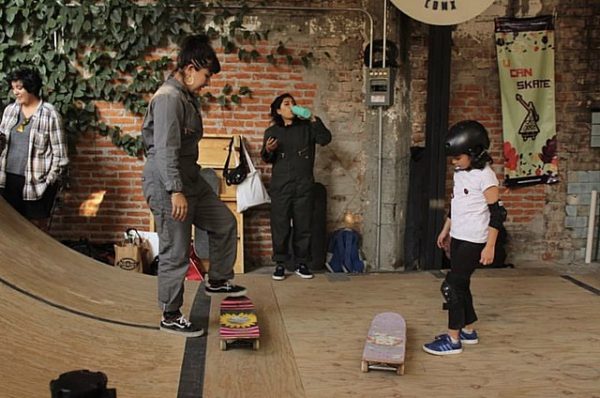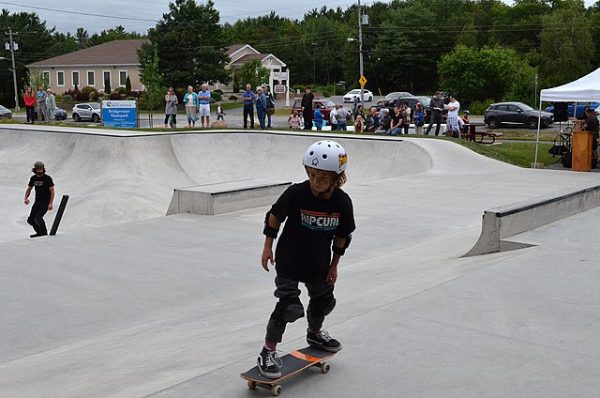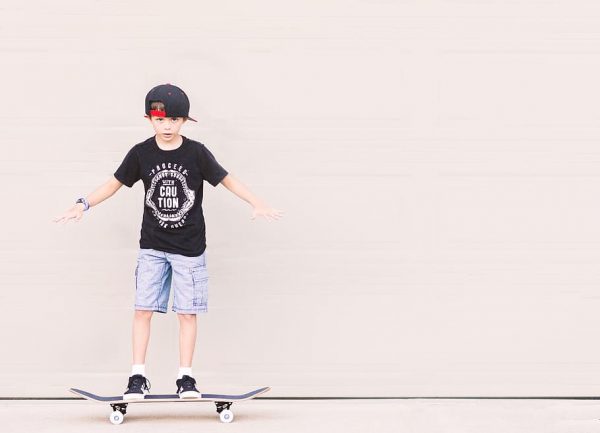Skateboarding, with its exhilarating twists and turns, is a thrilling activity that captures children’s hearts worldwide. As kids venture into this world of adventure on wheels, it becomes the utmost responsibility of the parents to prioritize the kid’s welfare. Showing kids skateboarding safety is not just a precautionary measure; it is a fundamental necessity to safeguard their well-being while they delight in the joy of skateboarding. By instilling in our kids the essential principles of safeness and welfare, we empower young skateboarders to confidently embrace the sport’s freedom, knowing they possess the knowledge and skills to navigate its potential risks.
This article aims to equip parents, educators, and young skaters with the indispensable knowledge and guidelines needed to foster a harmless culture. It ensures that each ride on the board becomes a treasured experience of excitement, growth, and, above all, safety. Let us embark on this journey, where safety meets fun and the thrill of skateboarding becomes an adventure grounded in wisdom and precaution.

Key Takeaways
The same traffic safety rules with riding a car or a big truck apply to skateboarding, one of the sought-after sports for teens. Other than putting confidence at the center of your focus, make sure also to include safety. Here are some takeaways from this article.
- Teaching kids safety tips for skateboarding harmlessness to ensure their well-being while enjoying the activity.
- Emphasize the importance of wearing proper protective and safety gear in your safety tips, including helmets, knee pads, elbow pads, mouth guards, and wrist guards. They should wear a helmet at all times.
- Choose the appropriate skateboard and equipment for the kid’s age, size, and skill level. The size of your skateboard also matters in your kid’s safety. We suggest including this in your safety tips too.
- Find a safe and designated skateboarding area, a well-lit area, and avoid busy streets or uneven surfaces.
- Learn and practice proper skateboarding techniques, including balancing, turning, and stopping.
- Teach kids skateboarding safety tips and staying safe always so that they may be able to protect themselves.
- Teach kiddos to be aware of their surroundings and avoid skateboarding in areas with moving vehicles or pedestrians.
- Encourage kids to skate one at a time and avoid overcrowding to prevent accidents.
- Emphasize that skateboarding tricks and stunts should be attempted within the kid’s skill level.
- Teach kids how to fall safely by rolling with the fall and protecting fleshy body parts.
- Promote responsible behavior, respect for others, and adherence to skate park rules and etiquette.
- Instill emergency preparedness knowledge, including having emergency contacts, basic first aid skills, and recognizing potential hazards.
The Importance Of Showing Kids Safety On Skateboards
Skateboarding is a popular and exhilarating activity that captivates the imagination of kids and adolescents. Whether riding their boards at home or skate parks, kids experience a sense of freedom, accomplishment, and excitement like no other. However, amid the thrill and joy of skateboarding, it is crucial to underscore the paramount importance of harmlessness, especially when kid skaters are involved, and the use of safety gear is among the safety tips to impart to them. Emphasizing sports safety can prevent injuries and help them enjoy skateboarding responsibly.
- Preventing Injuries: Safeness in skateboarding is the primary means of preventing injuries and ensuring safe kids. While it is impossible to eliminate all risks, understanding and following guidelines and safety tips significantly reduce the likelihood and severity of accidents. Wearing a proper helmet to minimize the impact, including knee pads, elbow pads, and wrist guards for optimum risk safety management. Through this, kids create a protective barrier against potential falls and collisions if they’re riding the skateboard. The same rules apply when they hitch a ride.
- Building Confidence: When kids feel safe and secure on their skateboards, they are more likely to develop confidence in their skills and abilities.
- Encouraging Responsible Behavior: Teach kids about skateboard safety tips to instill responsibility and accountability. They learn to respect their well-being and the well-being of others. Moreover, you can help them learn how to fall safely to encourage positive behavior.
- Cultivating Lifelong Harmlessness Habits: The good lessons kids learn about harmlessness and staying safe while skateboarding can extend beyond the skate park.
- Avoiding Serious Consequences: Serious accidents in skateboarding can result in severe injuries that may have lasting effects on a kid’s physical health and overall well-being.
- Creating a Positive Experience: Ensuring skateboarding is a safe activity fosters a positive and enjoyable experience for kid skaters. When they feel secure, they can fully embrace the fun and excitement of skateboarding without unnecessary worry or fear.
- Gaining Parental Confidence: Parents are more likely to support their kids’ skateboarding endeavors if they see that safety is a priority. Demonstrating a commitment to harmlessness helps parents feel assured that their kids are engaging in a supervised and responsible manner and following the safety tips given to them.
- Role Modeling: When adults, such as parents, teachers, or older siblings, prioritize well-being and wear appropriate skate gear, they become role models for kid skaters.
Teach Kids Security & Safety Tips
Preventing injuries and ensuring children enjoy skating and skateboarding responsibly requires teaching them the use of safety gear and following security and safety tips. Stress the need to use protective gear, such as elbow, knee, and helmets, to reduce the possibility of major injuries. To prevent crashes, also teach kids to skate in designated, safe locations away from traffic and to always be aware of their surroundings and other skaters.

Choosing The Right Gear Like Wrist Guards
Choosing the right safety gear is crucial in ensuring the safety and enjoyment of skating and skateboarding for kids. Proper skate gear protects kid skaters from injuries and enhances their confidence and performance. Here are the essential pieces of skate gear to consider when selecting the right equipment:
- Helmet: A properly fitted helmet is the most critical skate gear for skateboarders of all ages, especially kids. Look for a skateboard-specific helmet that meets safe standards (e.g., ASTM F1492) and provides full head coverage, including the back and sides. The helmet should fit snugly on the head and have adjustable straps for a secure fit. While a bike helmet may provide some protection, it may not offer the same coverage and impact protection as a skateboard-specific helmet.
- Knee Pads and Elbow Pads: Your kid must wear knee pads and elbow pads. These are essential to protect joints from impact during falls. Look for pads with a durable outer shell and comfortable padding inside. The pads should be adjustable and offer a secure fit without restricting movement.
- Wrist Guards: Wrist guards protect the wrists from fractures and sprains during falls. Choose wrist guards with sturdy splints on the palm side and adjustable straps to ensure a snug fit.
- Proper Footwear: Skateboarding requires shoes with good grip and ankle support. Choose skate shoes with flat and grippy soles to provide better board control. High-top shoes can offer additional ankle protection.
- Protective Clothing: Encourage kids to wear long-sleeved shirts and long pants while skateboarding to protect their skin from abrasions during falls.
- Skateboard: When selecting a skateboard, consider the kid’s age, size, and skill level. Beginners may start with a wider, more stable deck, while more experienced skaters can opt for narrower decks for better maneuverability.
- Trucks and Wheels: Ensure the skateboard’s trucks (the metal parts that hold the wheels) are appropriately adjusted to match the kid’s skill level and riding style. Softer wheels provide better grip, while harder wheels are more suitable for tricks and street skateboarding.
- Bearing Maintenance: Properly maintained bearings are essential for smooth rides. Teach kids how to regularly clean and lubricate their bearings to keep their skateboards rolling smoothly.
- Equipment Quality: Invest in high-quality skate gear from reputable brands to ensure durability and reliability.
- Proper Fit: All protective skate gear should fit comfortably and securely without being too tight or loose. Ill-fitting skate gear can be uncomfortable and may not provide adequate protection.
- Replace Damaged Skate Gear: Regularly inspect all skate gear for signs of wear or damage. Replace any skate gear that shows signs of significant wear, cracks, or tears.
Acquainting kids about the importance of selecting and properly maintaining the right skate gear fosters a culture of safety and responsibility in skateboarding. By prioritizing safety, kids can confidently enjoy their skateboarding adventures while minimizing the risks of this thrilling sport.
Basic Kid Skateboarding Skills
Learning basic skateboarding skills is the foundation for kids to build confidence and progress in the sport. As beginners, they should focus on mastering these fundamental skills before attempting more advanced tricks. Here are some essential basic skateboarding skills, safety tips and Here are some essential skateboarding skills and Consejos de Seguridad for kids:
- Stance: Start by helping kids find their natural stance on the skateboard. They can try both “goofy” (right foot forward) and “regular” (left foot forward) stances to see which one feels more comfortable.
- Pushing: Teach them to push off the ground with one foot while keeping the other on the skateboard.
- Turning: Show them how to shift their weight to turn the skateboard. Leaning slightly to one side will initiate a turn.
- Stopping: Teach them different ways to stop safely. The most straightforward method is to drag one foot on the ground to slow down gradually. Additionally, they can learn to use the skateboard’s tail to perform a “tail stop” by pressing down on it.
- Skateboard Balancing: Balancing is crucial in skateboarding. Encourage kids to practice standing on the skateboard without moving, then progress to rolling slowly while maintaining balance.
- Kickturns: Once comfortable with basic turning, introduce kickturns. This involves lifting the front or back wheels off the ground to pivot the skateboard differently. This skill is essential for navigating obstacles and making sharper turns.
- Riding Over Cracks and Obstacles: Teach kids how to ride over cracks and small obstacles like pebbles safely. They should learn to lift the front wheels slightly when encountering obstacles to avoid getting stuck.
- Ollie (Basic Jump): The ollie is a fundamental skateboarding trick. It involves popping the skateboard’s tail while sliding the front foot forward to lift the board off the ground. While the ollie is a more advanced skill, introducing the concept early can help kids understand the mechanics of jumping on a skateboard.
- Riding Down Ramps and Inclines: Once they are confident riding flat surfaces, introduce them to gentle inclines or small ramps. Show them how to adjust their speed and balance while climbing slopes.
- Falling Carefully: Teach them how to fall properly to minimize injuries. Emphasize rolling with the fall and trying to land on the fleshy parts of the body, like the side of the shoulder or thigh, rather than on outstretched hands or knees.

Teaching Kid’s Skateboarding Etiquette
Understanding skateboarding rules and etiquette is essential for creating a safe and enjoyable environment for all skateboarders, regardless of age or skill level. Here are the key skateboarding rules and etiquette to impart to kid skaters:
- Respect Skatepark Rules: If skateboarding in a skatepark, make sure they are familiar with and abide by the specific rules posted at the facility.
- Give Right of Way: Teach them to yield to other skateboarders or park users when necessary. Yielding means giving way to others to avoid collisions or accidents.
- Wait Your Turn: Encourage them to be patient and wait their turn when the skatepark or skate spot is busy.
- Announce Your Intentions: They should let others know by using verbal cues or hand signals before attempting a trick or maneuver. This helps prevent surprises and collisions with other skateboarders.
- No Snaking: “Snaking” is when a skateboarder cuts in front of another without waiting their turn. Teach them to avoid this behavior, as it can lead to conflicts and accidents.
- Keep the Skatepark Clean: Instruct them to pick up their trash and encourage others to do the same. Keeping the skatepark clean helps maintain a positive environment for everyone.
- No Vandalism: Skateboarders should never engage in vandalism or damage to public or private property. Respecting the skatepark and the surrounding areas is crucial for maintaining a good reputation for the skateboarding community.
- Watch Out for Pedestrians: If skateboarding in areas with pedestrians, kids should be extra cautious and yield to walkers. Avoid skateboarding in crowded areas where pedestrians might feel unsafe.
- Be Mindful of Noise: Skateboarding can be noisy, especially in a skatepark. Encourage them to be mindful of their volume and respect noise restrictions, especially in residential areas.
- No Drugs or Alcohol: Emphasize that skateboarding should be done sober and without the influence of drugs or alcohol. Substance use can impair judgment and increase the risk of accidents.
- Be Friendly and Supportive: Encourage kids to be friendly and supportive of other skateboarders. Creating a positive and inclusive atmosphere fosters community within the skateboarding culture.
By following these skating and skateboarding rules and practicing proper etiquette, kid skaters can contribute to a safe and harmonious skateboarding environment where everyone can enjoy the sport to the fullest.
Teaching Kids Skaters’ Limits
Recognizing and respecting personal limits is crucial for kids in skateboarding. Kids should honestly assess their skills, start with basic maneuvers, and gradually progress to more challenging tricks. It’s essential to listen to their bodies, take breaks when needed, and avoid peer pressure to attempt advanced tricks beyond their abilities.
Teaching Kids Emergency Preparedness
Here are essential aspects to teach them about emergency preparedness:
- Emergency Contacts: Ensure kids have important emergency contacts saved in their phones or memorized, including parents’ phone numbers, emergency services (such as 911), and a trusted adult they can contact for help.
- Know the Area: Teach kids to familiarize themselves with the skateboarding location and surrounding areas. Identify nearby landmarks, medical facilities, and safe places to seek help.
- Carry Identification: Encourage kids to carry identification with their name, emergency contacts, and relevant medical information. An ID bracelet or card in their wallet can be helpful in case of an accident.
- First Aid Basics: Provide basic knowledge of first aid, such as cleaning wounds, applying bandages, and knowing when to seek medical attention. Encourage kids to carry a small first aid kit while skateboarding.
- Stay Calm and Call for Help: Teach kids to remain calm in an emergency and call for help immediately if someone else is injured. Remind them that quick action can be critical in ensuring proper care.
- Inform a Responsible Adult: Instruct kids to inform a responsible adult about their skateboarding plans, including the location and estimated return time. This way, someone knows where they are and can check on them if necessary.
- Avoid Risky Situations: Teach kids to be cautious and avoid risky behaviors that could lead to accidents, like injuries and broken teeth. Encourage them to recognize potential hazards and make safe decisions while skateboarding.
- Stay Visible: If skateboarding in low-light conditions, ensure they wear bright or reflective clothing to stay visible to others, especially drivers.
- Emergency Drills: Conduct drills with kids to practice what to do in different situations. This practice can help them react more effectively if an emergency occurs.
- Helping Others: Teach kids how to assist someone else in need during an emergency, such as calling for help or providing basic first aid if they are trained to do so.
Equipping kids skateboarders with emergency preparedness knowledge makes them more self-reliant and responsible, leading to a safer and more enjoyable skateboarding experience. It’s crucial to discuss skateboard-related injuries, particularly with kids younger than a certain age. Advise them not to wear headphones while skateboarding and choose dry surfaces in safe areas.
We truly hope parents and kids can take these skateboard safety lessons to heart.
